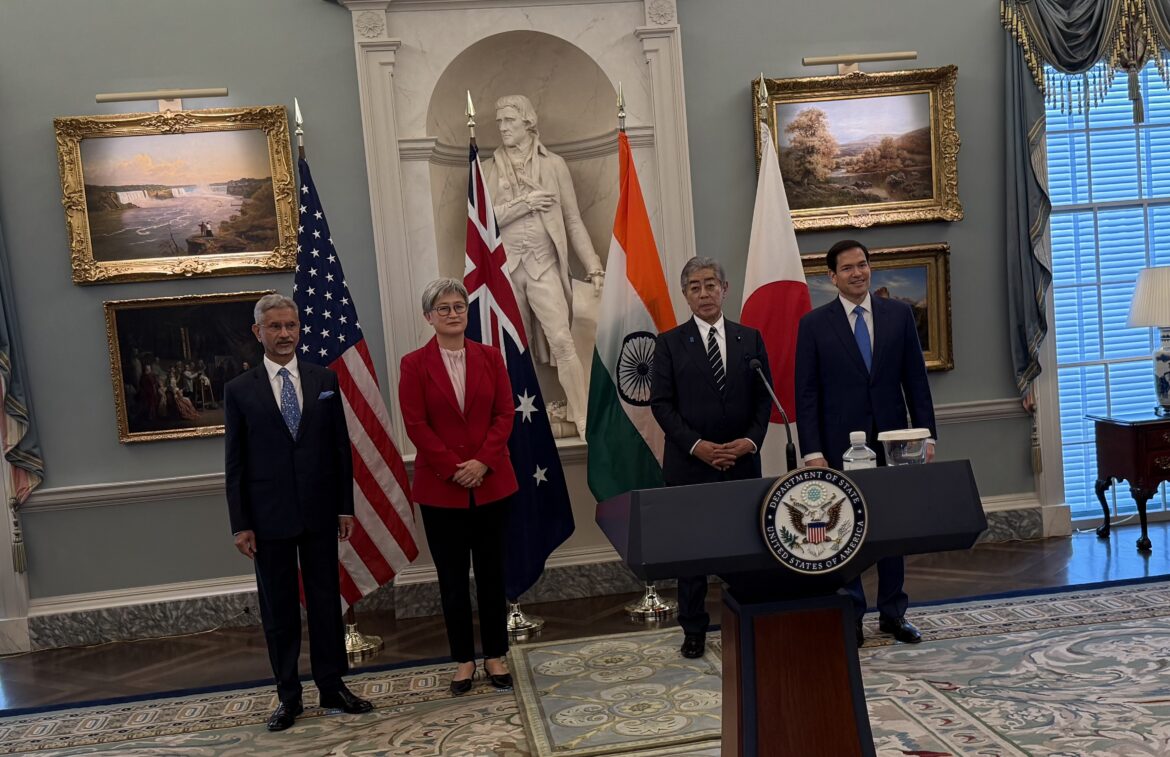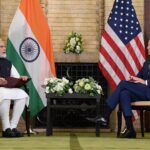In Critical and Emerging Technologies (CET), China is no longer merely catching up; it is setting the pace in some sectors. This surge demands not just vigilance but urgent, decisive action. U.S. strengths in foundational AI, space, chip design, biotechnology, and quantum computing remain real, yet they are no longer unassailable. Harvard’s 2025 CET Index confirms that while the U.S. still leads in all five, China is rapidly narrowing the gap in biotechnology and quantum computing.
Beijing’s advantage isn’t a miracle; it’s policy discipline at scale: targeted subsidies, domestic capacity building, and an ecosystem bent toward strategic self-reliance. This ambitious model of innovation is disrupting, overtaking previous leaders in fields ranging from AI, where DeepSeek R1 and Alibaba’s Qwen3 are making headlines, to pharmaceutical production, quantum sensing, and secure communications.
The wake-up call is clear: Washington cannot stay ahead of Beijing’s accelerating technology drive on its own. If it wants to shape and not just react to the next tech order, building and sustaining strong coalitions is imperative. The Quadrilateral Dialogue, also known as the Quad (comprising the United States, Japan, Australia, and India), is a key vehicle for advancing U.S. and allied technology leadership in the Indo-Pacific, built on shared strategic ambitions. It seeks to offer an alternative model for regional development and security, emphasizing a free and trusted partnership while reducing reliance on any single country for critical technologies.
Why the Quad matters
Since the first-ever in-person Quad Leaders’ Summit in 2021, the grouping has translated its strategic ambition into tangible action: setting common principles for CET governance and standards, launching the Quad Fellowship to build STEM talent pipelines, reinforcing subsea cable resilience across the Indo-Pacific, and, most recently, creating AI-ENGAGE to turn research into real-world solutions. That’s a foundation of real cooperation, and while there has been tangible progress and early successes, it is time to unleash its full capacity and surge ahead with the rapidly evolving technology order.
India offers a scale of talent, a vibrant startup ecosystem, and growing hardware ambitions, with its National Quantum Mission and the planned IBM-backed largest quantum computer by early 2026. Australia offers scientific depth, trusted rule-of-law credentials, and proven infrastructure expertise, treating subsea cables and digital networks as critical national assets.
Together, they give the Quad both the capacity and the credibility to shape the Indo-Pacific’s tech order. The U.S. has done this before, working with the Netherlands and Japan to align export controls on advanced semiconductor lithography while backing it with investments, restricting China’s access to the world’s most advanced chipmaking technologies and strengthening trusted supply chains among partners.
What Washington can do now
The essence of U.S. leadership is to leverage the Quad’s potential to sustain its lead in critical and emerging technologies through pragmatic, high-impact collaboration. Here’s how Washington can catalyse the next phase:
1) Build a “Quad Compute Backbone”
In line with the recent AI Action Plan, treat computing power as a shared strategic asset. Create a shared, secure network for AI and quantum computing linking San Diego, Sydney, Bengaluru, and Tokyo, which are established tech and research hubs with the talent, infrastructure, and connectivity to get such a system running quickly. This would be a federated network, meaning each country keeps control of its systems but connects them so they can work together.
A resilient compute backbone also needs resilient connectivity, anchored in trusted subsea routes and secure cable landing stations with zero-trust access, continuous telemetry, and joint incident-response drills. Pre-position spares and repeaters at Pacific depots and create a pooled rapid-repair fund to cut Mean Time to Repair (MTTR), while enabling seamless high-capacity, low-latency connectivity for AI and quantum collaboration across Quad partners.
2) Shift from just export controls to building things together
Keep necessary export restrictions in place but focus more on making technology jointly within the Quad. Set up a Co-Manufacturing Fund, linked to the Quad Investors Network (QUIN), to attract investment for areas where the U.S. has gaps in production, such as semiconductor packaging, advanced substrates, and cryogenic or photonic components (parts used in quantum computing and high-speed data systems).
Use U.S. Defense Production Act tools and financing support from Japan and Australia to reduce risks for private investors. Plan and work towards Quad manufacturing sites in India and Australia to complement production in the U.S., following the Quad’s 2021 tech standards so that parts can fit smoothly into supply chains.
3) Turn standards into contracts, quickly
The Quad principles on critical and emerging technology standards are strong, but principles alone do not shape markets. Embedding them into government procurement rules would make them the default operating standard for entire industries. Requests for proposals in AI, biotechnology, and quantum should require compliance with Quad-aligned norms on safety, auditing, and data custody.
Public contracts can set the tone for private investment, giving trusted vendors a competitive advantage and ensuring that critical technologies are built on shared democratic safeguards. Done well, this would create a de facto regional standard that makes it far harder for authoritarian models to take root.
4) Create a Quad Tech Talent Framework
Treat talent mobility as a strategic asset. Begin with mutual recognition of select STEM credentials across member nations, and offer reciprocal, multi-entry research visas linked to Quad-funded labs and startups. Expand the Quad Fellowship to include mid-career tracks in secure computing, quantum engineering, and bio-manufacturing. Leverage each partner’s strengths—India’s large pool of STEM graduates, extensive population datasets for AI model training, and unique genomic diversity for biotech research to accelerate innovation. In return, give partners access to U.S. national lab user facilities in exchange for co-funding, creating a virtuous cycle of shared resources and breakthroughs.
The stakes and the payoff
This is not about “containing” China; it is about competing by building. A Quad that codes together, manufactures together, and secures its digital and physical infrastructure will be far more resilient than any one country playing defense. It must strike a balance between capital and competition through open interfaces, multi-vendor systems, and policies that prevent long-term dependence on any single supplier.
The challenge for Washington, as the Quad’s leading driver, is to commit sustained resources and political capital to turn plans into results on timelines that markets demand. Done right, the Quad can evolve from a diplomatic forum into the Indo-Pacific’s defining technology alliance, one with a lasting competitive edge.






